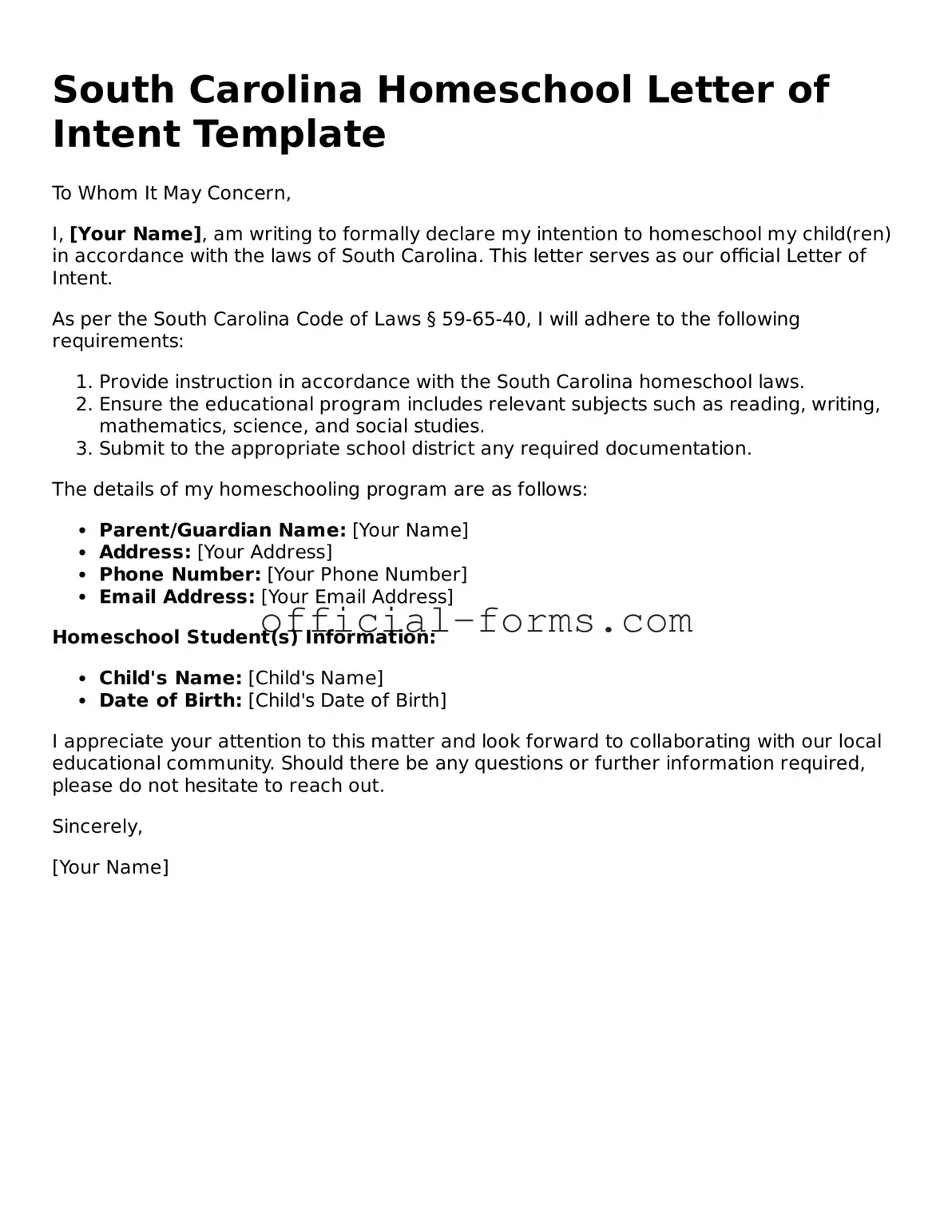Official South Carolina Homeschool Letter of Intent Document
The South Carolina Homeschool Letter of Intent is a formal document that parents must submit to notify their local school district of their intention to homeschool their children. This letter serves as an essential step in establishing a homeschooling program in compliance with state regulations. Understanding how to properly complete and submit this form is crucial for parents embarking on the homeschooling journey.
Open My Homeschool Letter of Intent Now
